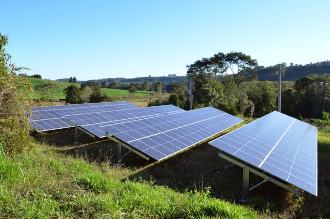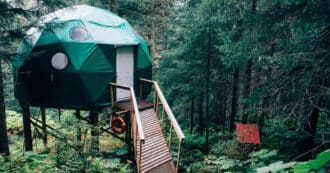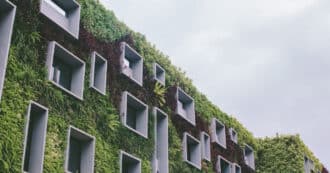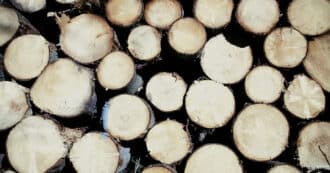By Harry Cooper – Anyone who has some appreciation of nature has probably had some fantasy about leaving the world of civilization behind and going to live in the wilderness. While this ultimate expression of independence, self sufficiency, and rejection of society may seem like nothing more than a passing fantasy, as it turns out, living off the grid is more viable than most people would think.
Is OFF the Grid “Roughing It”?
Although living off grid conjures up images of living with no energy and thus no modern conveniences or technology, this is not what it means. There is no reason not to have a good life whilst living off grid as you just need to find alternative energy sources. Furthermore, living with a clear conscience contributes to the quality of your life.
People don’t know where to start when trying to build an off grid home or live an off grid lifestyle. But luckily there are many different ways of getting energy, water, and building homes off the grid that can be just as, if not more practical, than traditional on grid living.
Along with off grid living being very achievable, it is also often more environmentally sustainable. This is because building off grid requires adopting a more sustainable and minimalist lifestyle.
Problems With ON Grid Living
Many houses in the world today contribute to serious environmental problems. This is because many homes are incredibly energy inefficient and come with a large carbon footprint.
Building a new home emits a lot of carbon dioxide. It is estimated that building a new two bedroom house produces around eighty tons of carbon emissions.
Once houses are built, they also waste a lot of energy due to poor insulation and energy management. This is especially true for older homes.
The Efficiency Of OFF Grid Lifestyles
Unlike traditional living, living off grid means less access to the materials and resources that come with living closer to organized civilization. As a result, techniques for building off the grid have much less of a carbon foot print than methods for building traditional homes. Along with this, off grid homes usually entail relying on more renewable sources of energy for getting electricity.
How to Live Off The Grid
Living off the grid is more achievable than most people would think. However there is still a lot to know before leaving organized society behind.
The Legal Aspect of OFF Grid Living
Detaching from the grid can come with several legal challenges. While living off the grid is not illegal in any US state, there are various local zoning laws and regulation that could make going off the grid a hassle.
Some common restrictions include septic tank regulations, disconnecting from public utilities such as the electrical grid, composting laws, and water collection laws. Violating some of these regulations can result in large fines or jail time.
It is important when building off the grid to know the local regulations of where you’re building. Some places will be legally better than others to build on depending on the local laws and property taxes.
Energy OFF The Grid
One of the most important things to consider when building an off grid home is how to power your home. Even though by definition off grid houses are disconnected from mainstream power grids, there are many other ways of getting energy off the grid that rely on renewable resources that are stronger and better for the environment.
One of the more popular methods of getting off grid energy is by using solar power. If you’re building your off grid house in a particularly sunny location it might be a good idea to invest in solar panels. Solar power is incredibly efficient and considered one of the more cost effective options.
If your off grid home isn’t in a place that gets a lot of sun there are still other options for off grid energy, such as wind power. Wind turbines are a little more expensive than solar panels, but if your local winds are strong and consistent, it might be a good idea to invest in a small household wind turbine.
Water OFF The Grid
Water is a resource that we can’t live without, and it is important to make sure that your off grid home has easy access to it. While supplying your own water may sound complicated, there are a couple ways to get access to water off the grid.
One way to get water is through collecting rain in rain barrels. This method is simple to install and less costly. However, rain water often needs to be purified, and during droughts water may not be available at all.
Another method is by digging a well to access ground water. Wells are more practical and more consistent than rain collection.
Types of OFF Grid Houses
When building off the grid it is important to know what kind of off grid cabin you want to build. Luckily there are many different types of homes you can build off the grid with different pros and cons for each one.
Log Cabins
Some of the most iconic imagery of people living off the grid involves log cabins tucked away in a scenic nook in the woods. While log cabins are not always the standard when it comes to living off the grid, they are certainly a good option to consider when going off grid.
Log cabins may seem like they use more wood to build a less efficient house. But that is often not the case. Building the wood frame of a traditional house uses just as much, if not more wood than building a log cabin. And because the walls of log cabins are so thick, they can often be more insulated than traditional houses.
Cob Buildings
Cob buildings are not the most well known for of off grid house but they are an incredibly practical one. Cob buildings involve using mud, clay, dirt, and straw to construct huts and cabins.
Cob buildings are very durable and last an incredibly long time. Not only are they very structurally sound, but their mud walls also help regulate humidity and temperature.
Cob is so good at regulating temperatures because of how thick and dense it is. This can help save money on cooling and heating costs, while making your off grid home more energy efficient.
Building OFF the Grid and Religion
The Mongolian nomads live and build off the grid in a fascinating manner. A Wired article describes how Mongolian nomads live in tents called “yurts” (or ger in Mongolian) and herd typically “about 1,000 animals—mostly sheep and goats, but cows, horses, dogs, camels, and yaks as well.” The nomads move their yurts in the spring to get their animals maximum pasture and in the winter they move their yurts into hilly nooks to find protection from the sun.
Building off the grid is hard enough, but imagine having to build off the grid and pack up your home and life every few months. But the Mongolian nomads have been doing just that for thousands of years. Along the way, they’ve had many different cultural influences, especially Buddhism and Shamanism, and they’ve brought those influences into their yurts. An article on the website, Selena Travel, describes how every detail of the yurt holds significance:
The two pillars that hold the toono (roof in a shape of a round opening) symbolize the man and the woman of the household, and walking between them is not approved of… The furniture inside a ger is arranged according to the years of the Lunar calendar in a clockwise direction…The door is located in the year of the Monkey because strangers and guests come through the door (monkey is an uncommon animal to Mongolia). From the religious standpoint, a ger resembles a white seashell, a symbol of intelligence in Buddhism.
Although more and more of the Mongolian nomads are being drawn to city life, there are many others who continue to live sustainably in the way of their ancestors. When building off the grid, it’s important to be aware of how resources and conditions change throughout the year in your area. The Mongolian nomads model a way of living off the grid and in sync with the seasons that we would be wise to learn from. Before we try to reinvent the wheel, when we want to build off the grid, we should first study how indigenous people lived or currently live in our area. Learning from indigenous wisdom of how to sustainably live off the land is key to humanity’s transition towards a more sustainable lifestyle.
* Featured image source







